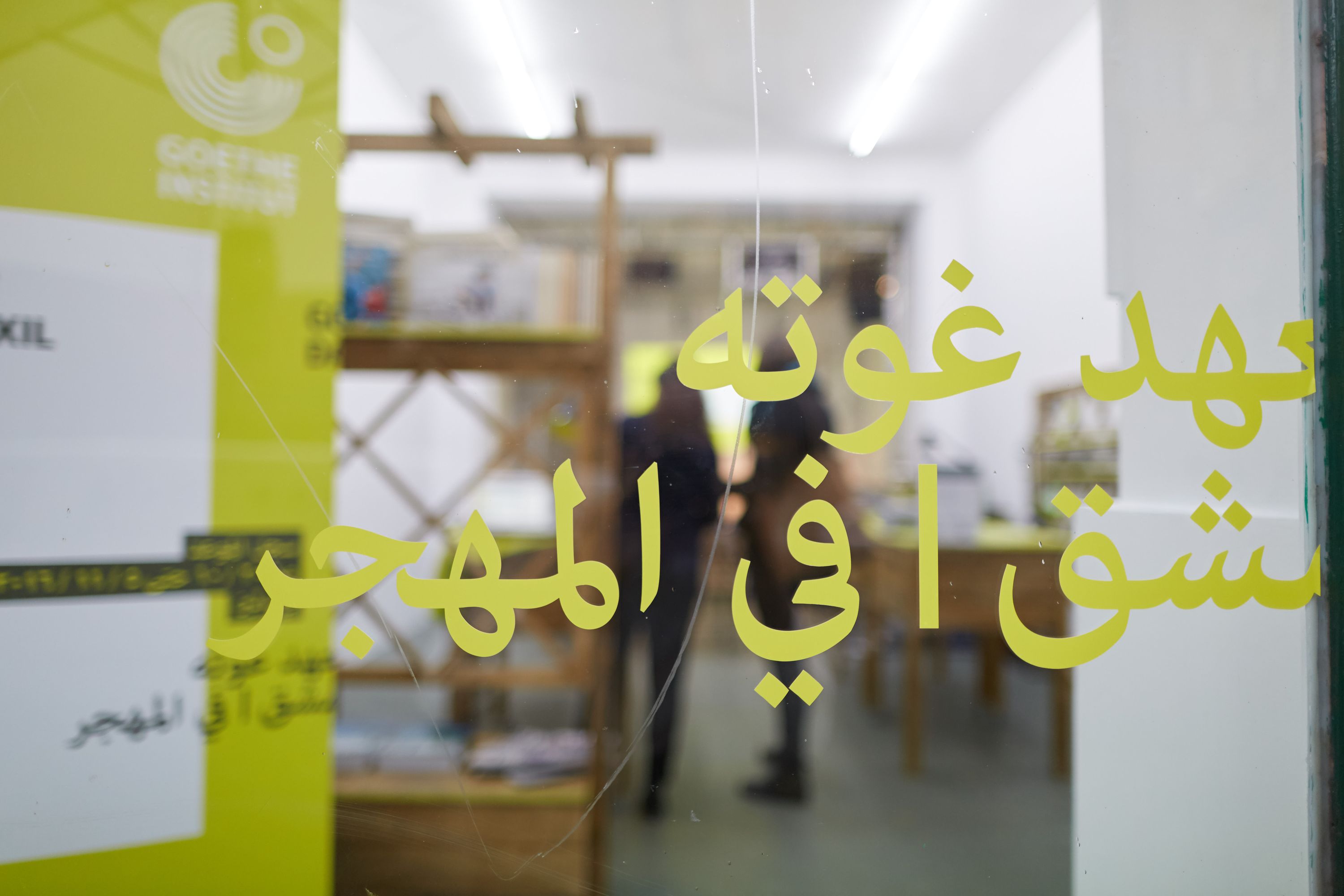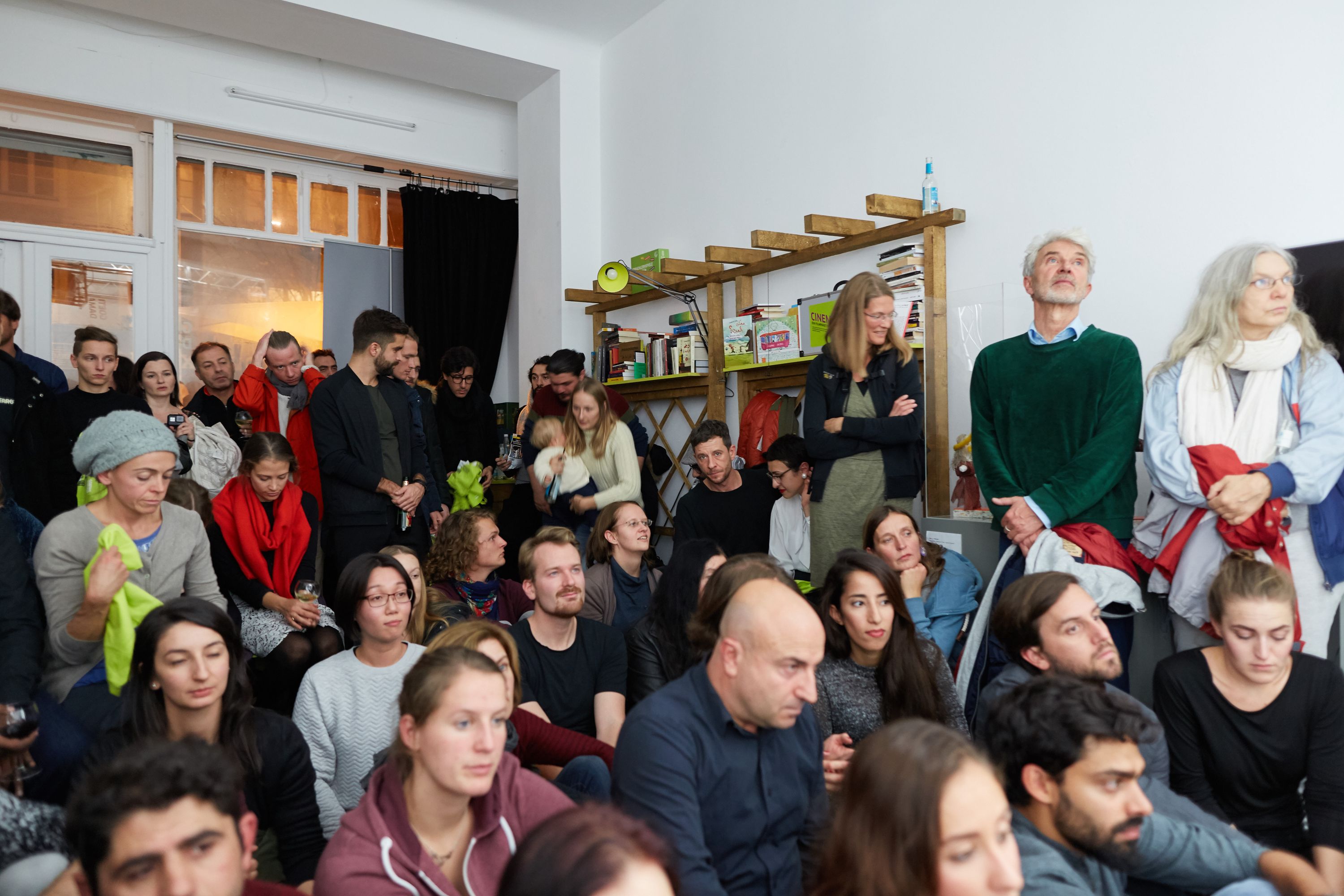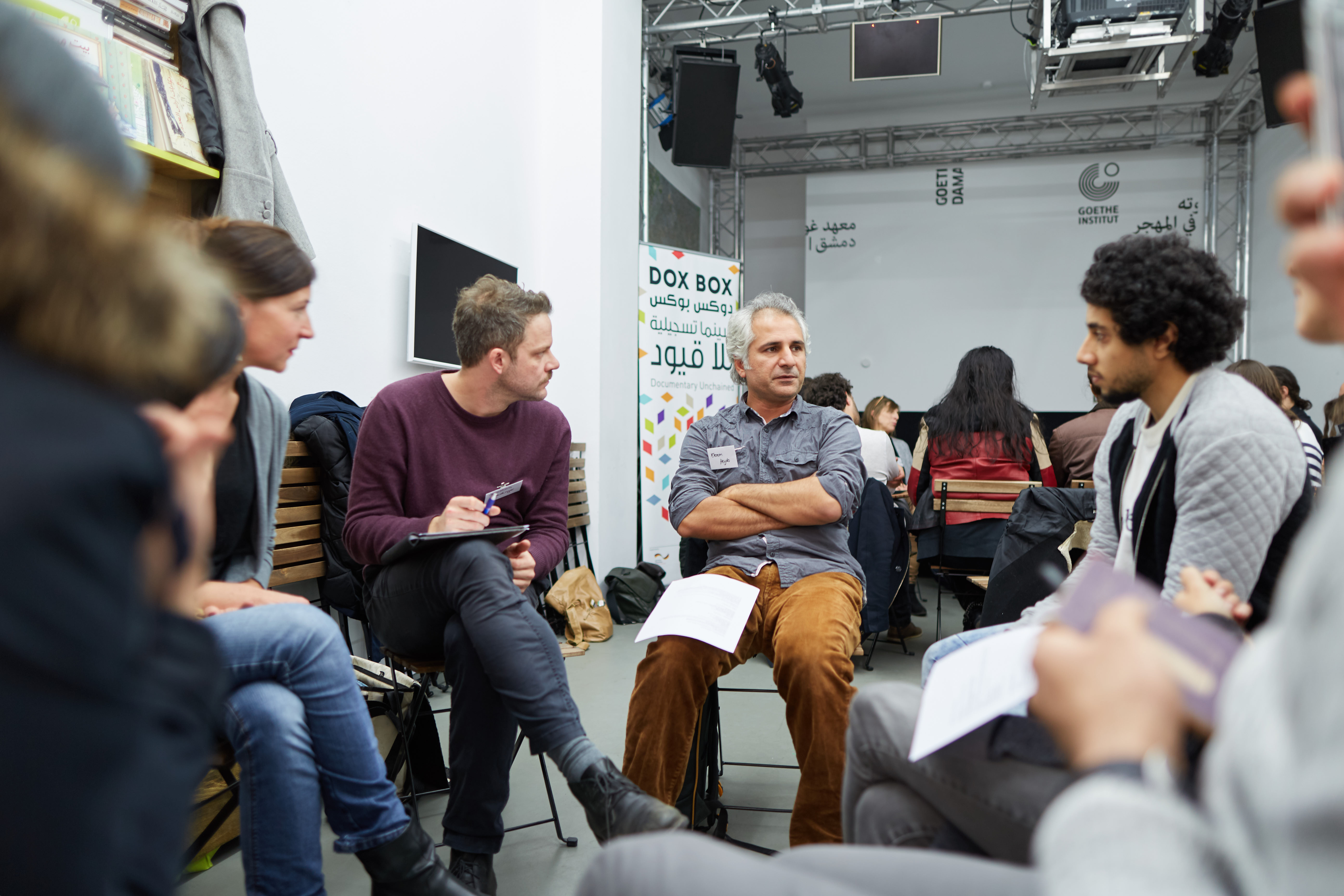2018-03-12
Authors
Gernot Wolfram
teaches as professor of media and cultural management at the Macromedia Hochschule Berlin. He is also the scientific director of the research project "The Moving Network" on the empowerment of refugees in the field of cultural education.
Creating cultural meeting points
From project to space

In October 2016, when the Goethe Institutes "Damascus in Exile" project was launched in a small shop in the center of Berlin, it was a structural novelty that brought a symbolic space and its political significance at the center of attention, and brought together people of different origins.
Due to the war in Syria, the Goethe Institute in Damascus had to be closed in 2012. Now it was quickly being reactivated for two and a half weeks in a 70-square meter shop. It therefore was the return of something that no longer existed in another location - something unreal, which at the same time displayed a clear, rationally-defiant approach.
Although concerts, readings, lectures, and workshops were held almost every day, these events were not the key point. Instead, the spontaneous discussions, the artistic dialogue, the exchange of memories by German, Syrian and international artists who had appeared at the Institute before the war in Damascus made up the unofficial focus of the events. There was finally a place for the many people interested that acted briefly as a market square. One could stop by, stay for a while, hang out outside or listen indoors. It was browsing in the best possible sense, which evaded the dramaturgy of participation in full. A piece of Damascus' past was to be found here, a piece of modern Berlin, and topographically something completely new. The place was an example of Michel Foucault's "heterotopias", those iridescent spaces that are both real and utopian.
From project to space
One year later, it is clear that this project, which is representative of many other similar projects, provided a useful clue to a change of perspective in contemporary cultural work. Rather than playing out similar themes and approaches in new projects with specific goals, measures, and evaluation reports, a communicative meeting point had been created instead. The focus was on the room and its gravitational pull of being able to offer the people the chance to interact with each other, even though it was merely a 70-square meter shop where the guests often had to crowd together to find space. No predefined project concepts were dominant, but rather opening-up measures and encounters. It was the creation of time and space for chance happenings and things that were unintended. It is therefore not surprising that many visitors asked the question, "Why are you closing this room again? We're just beginning to get started here."
This question touches on the complaint about the often-unsustainable funding of projects and the lack of sensible alternatives in cultural policy, which can be found above all in the freelance art scene. Right now, many cities and municipalities are showing that there is a shift in thinking and that awareness of the value of flexible, non-predefined spaces is increasing. Rooms are being used to serve as the basis for spontaneous cooperation and collaboration. Even established theaters and museums are increasingly interested in such external cultural laboratories. Places designed for projects, experiments and temporary use on the one hand, but conceived on the other hand for longer-term discourses such as the negotiation of diversity in public space. Urban planning discussions have widely taken up this idea as a social issue. Of course, such places must also be curated, supervised and budgeted; they are not anarchic, nor do they follow a classical program structure. But it is precisely this in-between state that makes them so exciting for visitors because their open character reminds people that only through the contribution of the recipient does art become something alive and dialogical.
Anchors and islands of time
A diversifying society needs suitable places for new negotiation processes about the role of art and culture. It needs sensible locations to do that. The well-known observation that there is a relatively homogeneous audience in many cultural institutions always has something to do with the location, history, character, and structure of the venues. Particularly in times of digital change, the need for real-time encounters and barrier-free spaces is growing. We are used to entering digital zones with one mouse click. It is, after all, just as easy for people, especially younger generations, to first "try out" cultural venues and thus not have to plunge into an extensive reception, as the purchase of an admission ticket for a specific event suggests. Undoubtedly, there is already a lively discourse on cultural diversity in cultural management.
But is there always a demand for more diverse cultural sites with as much accessibility as possible?
As early as 1928, the sociologist Karl Mannheim spoke of displaced issues. Such a displacement threatens the discussion about the relationship between inhabitancy, continuity and the presence of culture in public spaces, especially if there is no provision of how places and spaces - unlike in museums, libraries, theatres and cinemas are to be used. Cultural sites can be anchor facilities as described by Patrick S. Föhl (2016). Locations that provide support and offer depth instead of being heating vents for new projects and temporary initiatives. However, its not merely the issue of either-or. Projects can promote valuable artistic innovations and serve as experimental cues. It is above all about emphasis and a more precise understanding of the symbolic power of places that bring people into reflection and forethought. The Frankfurt refugee project "Homies" is already pointing towards the future by creating adaptable basic buildings for a living, working and cultural interaction. When will there be the first true homies for the cultural scene?
Three assumptions
What immediate and practical results can these considerations yield for cultural management? I would like to summarize this in three theories.
The first assumption states: "The development of new projects must not ignore the development of new participatory spaces." Surveys in many cities show that in the cultural milieu there is a need for continuity, exploration, interim use of space and a wish to have the time to develop ideas in a framework that does not disappear immediately. Projects that are, by their very nature, temporary can create locations that go beyond being topical. One such example is the mirrored pavilion at the port of Marseille, which was erected when the city was designated as the European Capital of Culture for 2013. Since then, the pavilion become a lively meeting place for people in the city. Or take for example "Route 44" of the Berlin initiative Kultur bewegt e.V., an organization established and led by young immigrant women in the district of Neukölln. Offering a network of different tours through the city of Berlin, their perspectives on certain streets through the district reveal the location as a diverse cultural environment and not merely a problematic district.
The second assumption states: "Urban development and cultural development must complement each other more strongly and be in dialogue with each other." One can learn from the current digital smart-city discussions that networking is the prerequisite for the success of redesigning urban life. But what role will culture play in the so-called smart cities of the future? Which actors will become prominent and which will be (further) marginalized? Can art intervene where technology takes over? Will artists help to make tomorrow's cities more colorful, diverse and aesthetic, or will cultural participation be further privatized and individualized? Previous articles in this magazine already show a variety of approaches to cultural management, but the question of the relationship between digitalization, artistic visibility (power of intervention) and broad cultural participation in virtual and real space is still in its infancy. Finding proximity to urban planning and smart city development will be essential. Andra Lichtenstein and Flavia Alice Mameli speak of a specific spatial culture that has yet to be created.
The third assumption is socio-political: "The opening of spaces also means creating new public spheres." The political developments of the last few years show that one can hardly speak of a public sphere in the singular, but of many fragmentary spheres that are in part public. It applies, especially to the cultural scenes. There is a wide range of unique offers for opera lovers, concerts, reviews, trade journals, blogs and Facebook groups as well as for jazz enthusiasts, people interested in literature, film fans, dance enthusiasts and museum visitors. But where do these sub-public spheres of cultural life converge? Just a few years ago, they could be found among the featured articles in newspapers, on television or during major cultural-political debates such as the 1970s and 1980s. However, this seems to be a thing of the past. Today, it would be more important than ever to have flexible places of public discourse that are frequented in a genuinely diverse manner and at the same time negotiate common cultural values. However, diversity, requires freedom, for example the freedom to leave a location when one wishes, or to recognize that one is not excluded per se because of specific characteristics. And there must be conditions for conversations that do not allow those who already determine public life through rhetoric and education to dominate.
The evenings in front of the entrance, as well as inside the "Damascus-in-Exile" Institute, which unfortunately disappeared again, were a preview of what could be possible. Refugees and locals did not meet here, but instead people interested in culture from different parts and strata of the city brought together by the idea of this space. Inventing such places could be a future task of cultural management.
References
Mannheim, Karl (1928): Das Problem der Generationen. ("The Problem of Generations). In: Kölner Vierteljahrshefte für Soziologie 7 (1928), S. 157185, 309330.
Föhl, Patrick S.; Wolfram, Gernot (2016): Transformation konkret. Vom Schlagwort zur lebendigen Praxis innerhalb von Kulturentwicklungsplanungen und Ermächtigungsprozessen (Transformation concrete. From the buzzword to live practice within cultural development planning and empowerment processes), in: Sievers, Norbert; Föhl, Patrick S.; Knoblich, Tobias (Ed.): Jahrbuch für Kulturpolitik 2015/16, Focus: Transformative Cultural Policy, Bielefeld 2016, pp. 381390.
IMPRESSIONS OF "DAMASCUS IN EXILE"


This article was first published in the December 2017 issue of our German journal.
It was translated by Erik Dorset.
There are no comments for this content yet.
similar content

